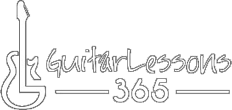Naming The Notes On The Fretboard Pt.2
The lesson this Christmas morning is Part 2 of our series on learning to name the notes across the fingerboard.
Now that we can name the notes on the 6th string we will use that knowledge to figure out the notes on all the other strings.
If you are consistent in your note naming practice you should see big improvements rather quickly. Just try and stay in the mindset that you want to know every note that you play at least some of the time.
If these free lessons help you, please donate to keep new ones coming daily. Thanks!! 🙂
Naming The Notes On The Fretboard Pt.2
Related Lesson
14 Comments
Leave a Comment
You must be logged in to post a comment.
 Skip to content
Skip to content
Sweet. Not hard to remember at all.
Carl, This is the most logical lesson I have seen. I have tried to make musical games figuring this out. GABE just made my life easier.
OH yeah, good ol’ Gabe. 😀
Great lessons! Carl keep the great job!
Here is another way that you can use to memorize the notes on the 5th and 3rd string in case you know the CAGED system (or A Shape Chords): The 5th and 3rd string are the tonic note for any A Shape chord that you play, which means that if you play an ‘A Shape’ C Major Chord, the 5th and 3rd string will be the note ‘C’. That makes it very easy to find the notes on those strings. If you want to know a note on the 5th string, imagine that you are playing the A Shape Barre chord with you index finger at the same fret that you would like to know the note on the 5th string. Example: A shape barre chord on the 3rd fret is C Major, therefore, the note name of the 3rd fret on the 5th is also ‘C’. The same thing applies for the 3rd string however 3 frets higher. Cheers!
Little correction on my explanation:
Here is another way that you can use to memorize the notes on the 5th and 3rd string in case you know the CAGED system (or A Shape Chords): The 5th and 3rd string are the tonic note for any A Shape chord that you play, which means that if you play an ‘A Shape’ C Major Chord, the 5th and 3rd string will be the note ‘C’. That makes it very easy to find the notes on those strings. If you want to know a note on the 5th string, imagine that you are playing the A Shape Barre chord with you index finger at the same fret that you would like to know the note on the 5th string. Example: A shape barre chord on the 3rd fret is C Major, therefore, the note name of the 3rd fret on the 5th STRING is also ‘C’. The same thing applies for the 3rd string however 3 frets higher. Cheers!
Thanks man, cool tricks to help me know what I’m playing.
Just perfect Carl ..
Keep going
Great lesson! Fantastic little trick. The problem solving almost keeps it interesting by itself.
Quick question if you don’t mind. This is the first lesson I’ve noticed your strap locks. What do you use? I have a Fender Strat American Standard and keep losing my strap.
Hey Blair, that was a set of strap locks that I used a long time ago. To tell you the truth, they didn’t work very well.
I just use the Dimarzio clip lock straps now. The only thing you need to watch out for with them is to make sure you wrap part of the plastic lock with duck tape or something because if it comes in contact with your guitar it will scratch it. 🙁
Thanks for the quick reply. Perhaps some black electrical tape. And thanks for the work you’ve put into your lessons.
your a heaven for me sir
Thanks, Carl! I am so glad to have found your site. I’ve been using your videos on Youtube but this just organizes everything so well for me. Love the Gabe method! Makes it so easy! And it happens to be my son’s name! Keep up the great work!
Thanks for watching Juls!
This is a great lesson to learn the relationships between all the strings! i learned the theory method
(W W H W W W H) to know the notes on each individual string which can help too but knowing the relationships the way you explain is even better.